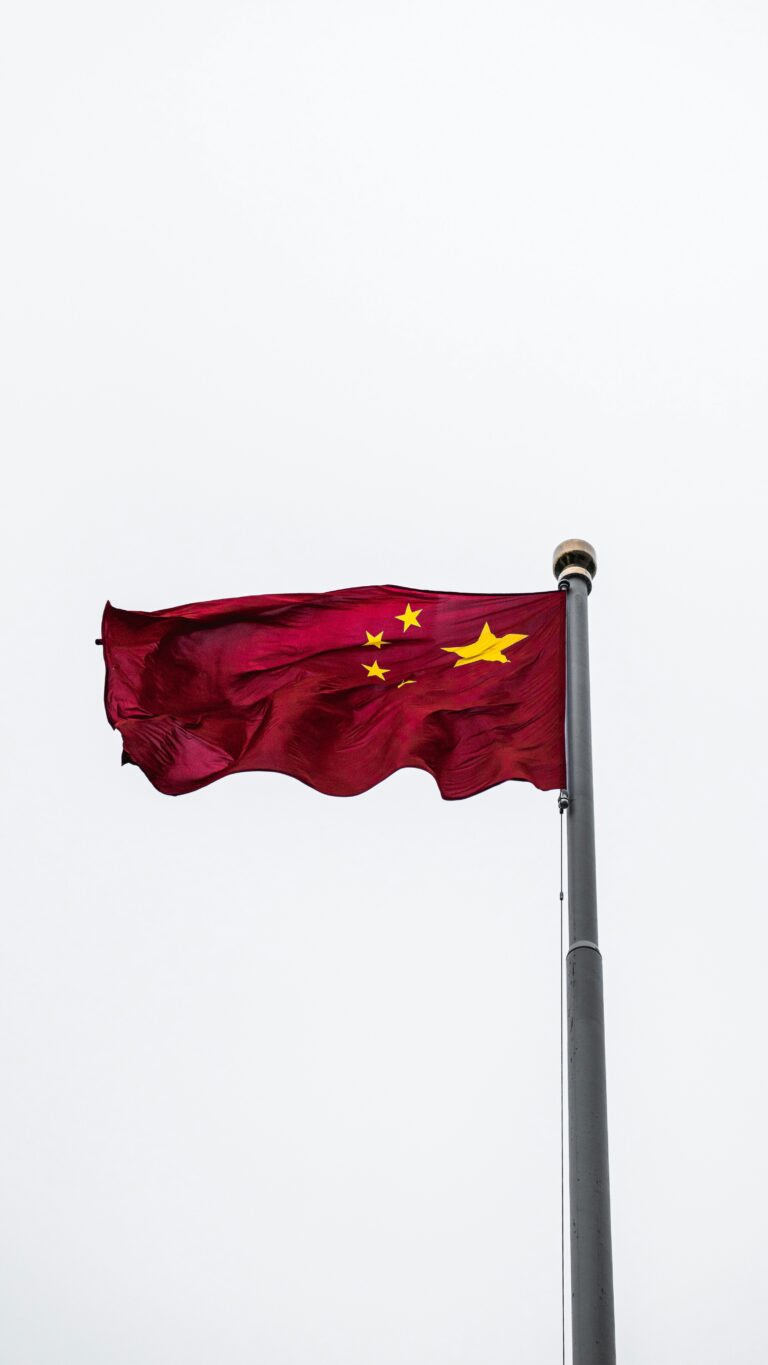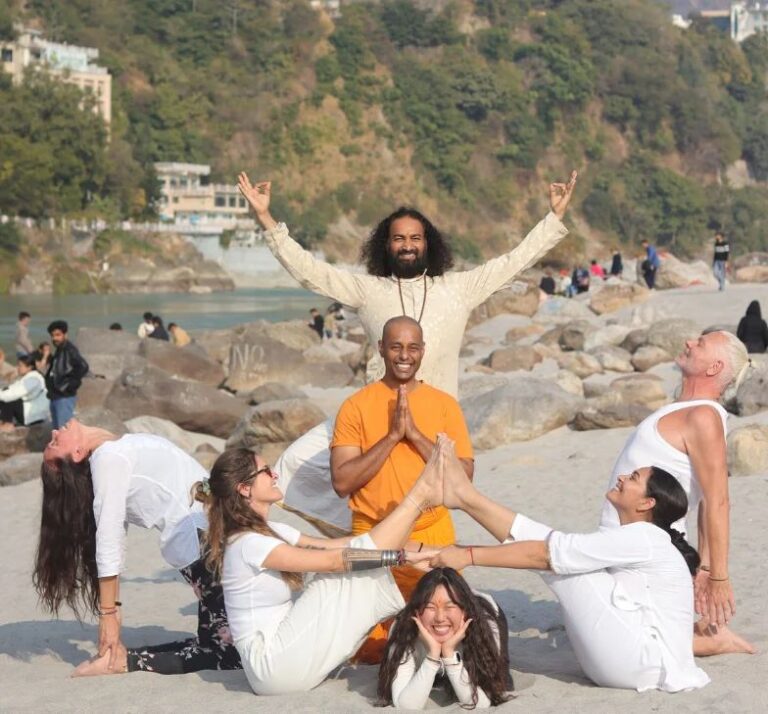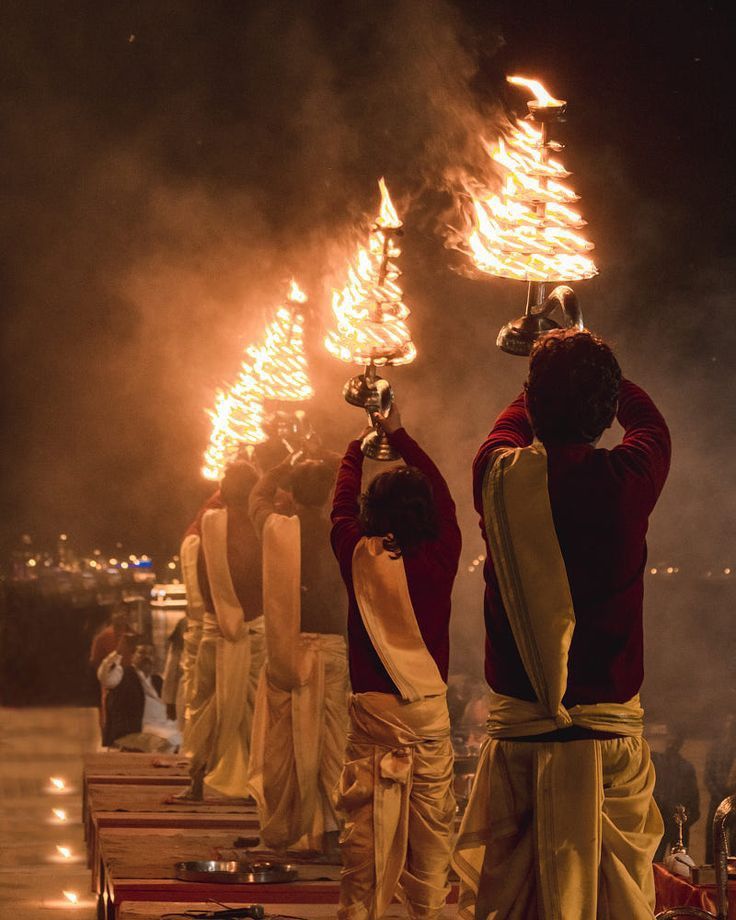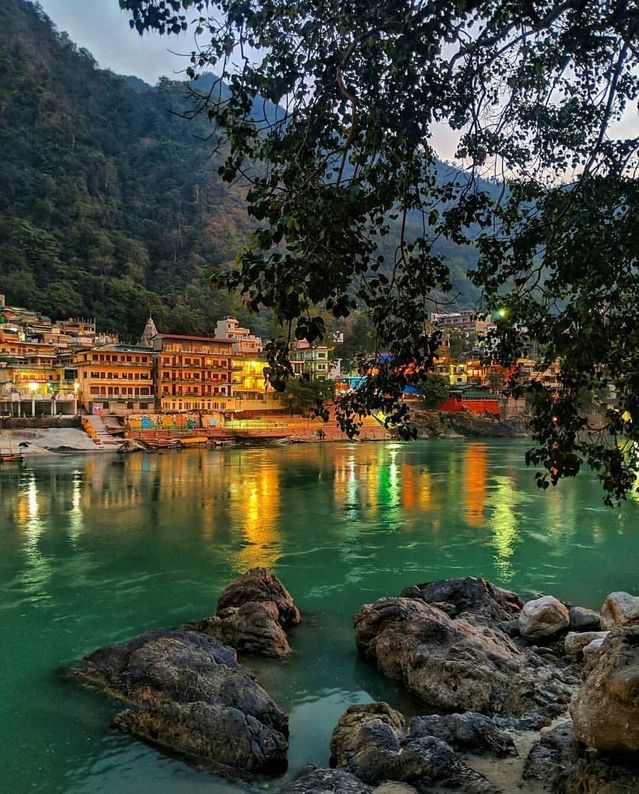Bagan Myanmar travel tips + temples [ Ultimate guide 2025 ]
The Ultimate Bagan Myanmar Travel Guide
Hey there, fellow wanderlusters! It’s your girl, Zoe, from Funky Fresh Travels, and boy oh boy, do I have a treat for you today! Buckle up, because we’re about to embark on an epic journey through the mesmerizing land of Bagan, Myanmar. This isn’t just any travel guide – it’s a full-on, no-holds-barred adventure through one of Southeast Asia’s most incredible destinations. So grab your Indiana Jones hat and let’s dive into this ocean of temples!
Why Bagan Should Be Your Next Travel Obsession

Picture this: You’re floating serenely in a hot air balloon, the warm breeze tousling your hair as you gaze down upon an endless sea of ancient temples bathed in the golden light of dawn. Sound like a dream? Well, pinch yourself, because in Bagan, this is just another Tuesday! I’ll never forget the first time I laid eyes on the Bagan Archaeological Zone. It was like stepping into a time machine and being transported back to the 11th century. With over 2,000 temples spread across 104 square miles, Bagan boasts the densest concentration of Buddhist temples anywhere in the world. It’s no wonder this place was finally recognized as a UNESCO World Heritage Site in 2019!
When to Visit: Timing is Everything
Let’s talk timing, folks. Bagan is a year-round destination, but if you want to make the most of your trip (and trust me, you do), you’ll want to plan carefully.
The Best Time to Visit
The best time to visit Bagan is during the dry season, which runs from October to March. This is when you’ll get those picture-perfect days with clear blue skies – ideal for temple hopping and hot air balloon rides.
November to February is the peak season, so expect higher prices and more crowds, but the weather is absolutely divine. I rolled into Bagan in late November, and let me tell you, it was like the weather gods had rolled out the red carpet just for us. Warm, sunny days perfect for exploring, and cool, crisp nights ideal for sipping a cold Myanmar beer on a rooftop bar. Pure bliss!
The Rainy Season
If you’re a budget traveler or prefer to avoid crowds, consider visiting during the low season (April to September). Just keep in mind that this is the rainy season, and some days can be pretty wet. On the plus side, you’ll get to see Bagan in all its lush, green glory, and score some great deals on accommodation.
I braved the rainy season once, and while dodging raindrops wasn’t ideal for temple exploration, watching storm clouds roll in over the ancient pagodas was a sight I’ll never forget. Plus, the temples looked absolutely magical emerging from the mist after a rain shower.
Getting There: Your Gateway to Ancient Wonders
Alright, let’s talk logistics. Getting to Bagan is half the fun, and you’ve got options, my friends!
By Air

The easiest way to reach Bagan is by flying into Nyaung-U Airport, which is just a stone’s throw away from the archaeological zone. There are regular flights from major cities like Yangon, Mandalay, and even Inle Lake. I’ve used this option a couple of times, and while it’s not the cheapest, it’s definitely the most convenient.
Pro tip: Book your flight in advance, especially during peak season. Trust me, you don’t want to be stuck in Yangon while all your friends are living it up in Bagan!
By Bus

For you budget-conscious travelers out there, overnight buses are your best bet. They run regularly from Yangon, Mandalay, and other major cities. I’ve done the overnight bus ride from Yangon, and while it’s not the most luxurious way to travel, it’s an experience in itself. Just make sure to bring a warm layer – those buses can get chilly!
By Train
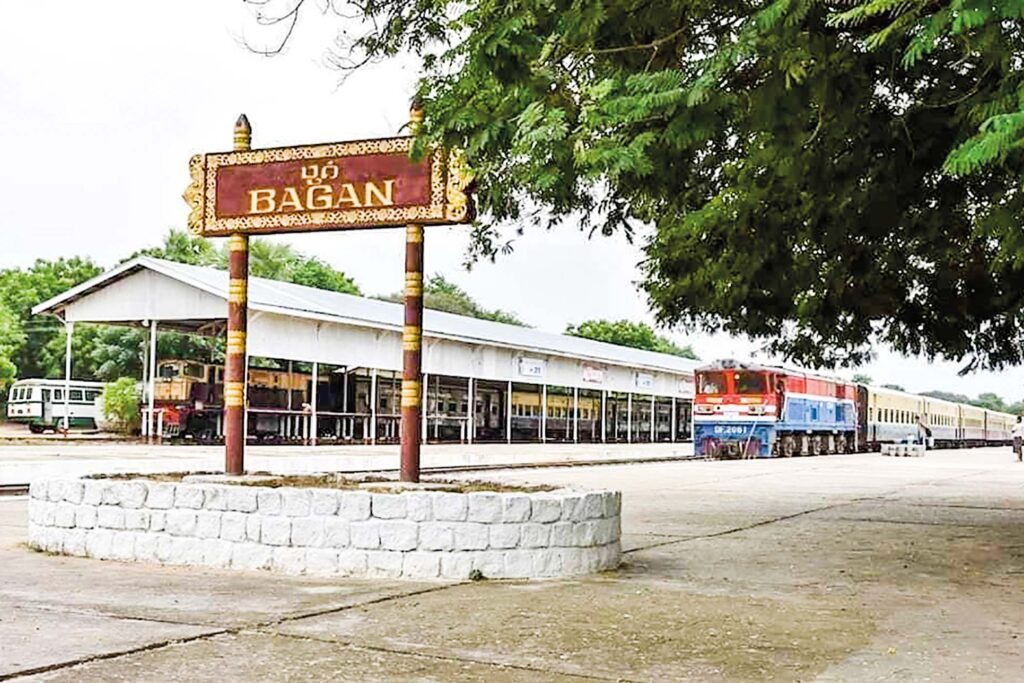
If you’re feeling adventurous (and have time to spare), consider taking the train. There’s a direct train service from Yangon to Bagan, but be warned – it’s a long journey (about 18 hours). I did this once for the experience, and while it was certainly memorable, I wouldn’t recommend it if you’re short on time or comfort is a priority.
Where to Stay: Your Home Away From Home
Bagan is divided into three main areas: Old Bagan, New Bagan, and Nyaung U. Each has its own charm, so let’s break it down:
Old Bagan

This is where you’ll find the highest concentration of temples. Staying here puts you right in the heart of the action, but it comes with a price tag. The luxury hotels here are something else – I splurged on a night at one of them for my birthday, and waking up to a view of hot-air balloons floating over ancient temples was worth every penny.
New Bagan

A bit further from the main temple sites, New Bagan offers a good mix of budget and mid-range options. It’s got a more local feel, with some great restaurants and a lively atmosphere. I’ve stayed here a few times and love the laid-back vibe.
Nyaung U

This is where most backpackers end up, and for good reason. It’s got the widest range of accommodation options, from budget guesthouses to beautiful boutique hotels. Plus, it’s got the best nightlife scene in Bagan (which, admittedly, isn’t saying much – Bagan isn’t exactly a party destination).My personal favorite? A cute little guesthouse in Nyaung U with a rooftop terrace perfect for watching the sunset. Nothing beats ending a day of temple-hopping with a cold drink and a front-row seat to nature’s nightly show!
Getting Around: Temple-Hopping Made Easy
Alright, so you’ve arrived in Bagan and you’re itching to start exploring. But how do you get around this vast archaeological wonderland? Fear not, intrepid travelers, for you have options!
E-Bikes

These bad boys are my personal favorite way to explore Bagan. They’re easy to ride, environmentally friendly, and give you the freedom to zip around at your own pace. Plus, there’s something incredibly fun about cruising down dirt roads, wind in your hair, ancient temples rising up on either side. Just be sure to charge them fully before heading out – getting stranded in the middle of nowhere is not as fun as it sounds (trust me, I learned this the hard way).
Horse Cart

For a more traditional experience, hop on a horse cart. It’s slower than an e-bike, but there’s something undeniably romantic about clip-clopping along sandy paths between thousand-year-old temples. I did this on my first trip to Bagan and it remains one of my fondest memories. Just make sure to negotiate the price beforehand and bring plenty of water – it can get hot out there!
Taxi or Private Car

If you’re short on time or prefer air-conditioned comfort, hiring a taxi or private car with a driver is a great option. It’s more expensive, but you’ll be able to cover a lot of ground quickly. Plus, many drivers double as unofficial guides and can share fascinating local insights. I’ve used this option when visiting with my parents, and it was perfect for them.
Hot Air Balloon

Okay, so this isn’t exactly a way to get around, but it is hands-down the most spectacular way to see Bagan. Floating serenely above the temple-studded plains as the sun rises is an experience that will stay with you forever. It’s not cheap, but if you can swing it, do it. I’ve done it twice now (once wasn’t enough!) and I’d do it again in a heartbeat.
Must-See Temples: A Journey Through Time
Alright, folks, this is what you came for – the temples! With over 2,000 to choose from, it can be a bit overwhelming. But fear not, I’ve done the legwork for you.
Here are some absolute must-sees:
Ananda Temple

Often called the “Westminster Abbey of Burma,” Ananda Temple is a architectural marvel. Its perfectly proportioned layout and gleaming golden spire make it one of Bagan’s most beautiful temples. I spent hours here, marveling at the four massive standing Buddha statues and the intricate details of the stone carvings.
Shwezigon Pagoda

This golden beauty is one of Bagan’s most significant religious sites. Its bell-shaped stupa is said to contain a bone and tooth of Gautama Buddha. I love coming here in the early morning when local devotees come to make offerings – it’s a great way to experience living Buddhism.
Dhammayangyi Temple

The largest temple in Bagan, Dhammayangyi is shrouded in mystery and dark legends. Its ominous presence on the plains is matched by its eerie interior – many of its corridors have been bricked up for reasons unknown. It’s a great place to let your imagination run wild!
Shwesandaw Pagoda

Once the most popular sunset spot in Bagan, Shwesandaw is still worth a visit even though climbing is no longer allowed. Its five terraces offer a great view of the surrounding plains. I love coming here in the late afternoon to watch the changing light paint the temples in golden hues.
Htilominlo Temple

This beautiful three-story temple is known for its elaborate plaster moldings and glazed sandstone decorations. Don’t miss the four Buddhas on the ground floor – each faces a different direction.
Thatbyinnyu Temple

Standing at 201 feet tall, Thatbyinnyu is the tallest temple in Bagan. Its unique white color makes it stand out among the sea of red-brick temples. I love how it seems to change color throughout the day as the sun moves across the sky.
Beyond the Temples: Other Bagan Highlights
While the temples are undoubtedly the star attraction, Bagan has so much more to offer.
Here are some other experiences you shouldn’t miss:
Mount Popa

Just a day trip from Bagan, Mount Popa is a extinct volcano topped with a stunning monastery. The 777 steps to the top are a bit of a workout, but the views are worth it. Plus, you’ll get to meet the local macaques who call this place home (just hold onto your belongings – they’re cheeky little thieves!).
Nyaung U Market

For a taste of local life, head to Nyaung U Market. It’s a riot of colors, smells, and sounds, with everything from fresh produce to traditional crafts on offer. I love coming here to pick up some local snacks and watch the bustling activity.
Irrawaddy River Sunset Cruise

After a long day of temple-hopping, there’s nothing better than relaxing on a boat, cold drink in hand, watching the sun set over the Irrawaddy River. The changing colors of the sky reflected in the water, with the silhouettes of temples in the distance – it’s pure magic.
Lacquerware Workshops
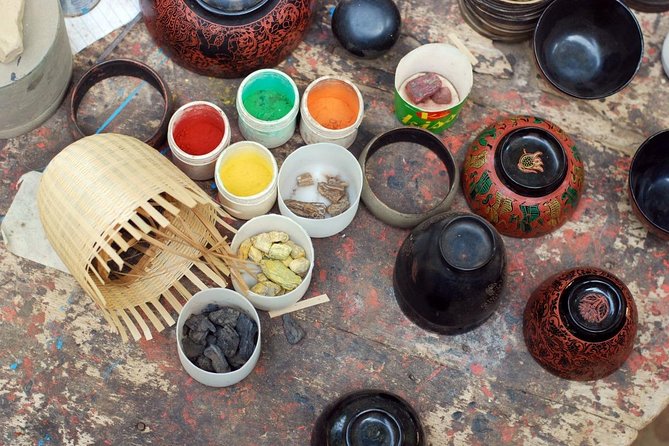
Bagan is famous for its lacquerware, and visiting a workshop to see how it’s made is fascinating. The intricate process involves applying layer upon layer of tree sap and etching intricate designs. I picked up a beautiful lacquer bowl as a souvenir, and it’s one of my most treasured possessions.
Eating Your Way Through Bagan
All that temple-hopping is sure to work up an appetite, and luckily, Bagan’s food scene doesn’t disappoint.
Here are some of my favorite spots:
1. Restaurant Row in Nyaung U
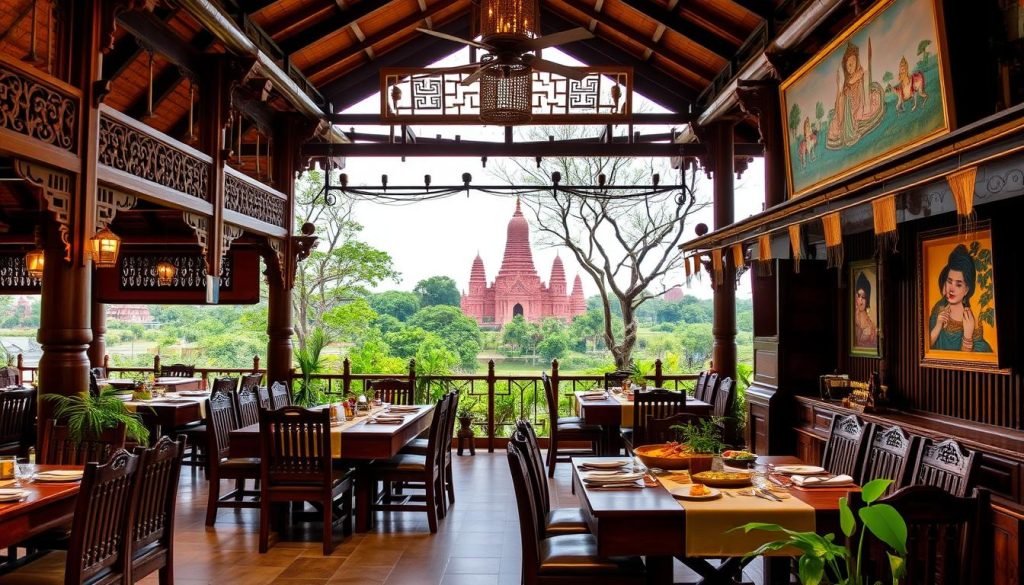
This stretch of eateries on Thiripyitsaya 4 Street is a food lover’s paradise. From traditional Burmese cuisine to Western favorites, you’ll find it all here. My personal favorite is a little place that serves the most amazing tea leaf salad – a Burmese specialty that’s absolutely addictive.
2. Be Kind to Animals The Moon
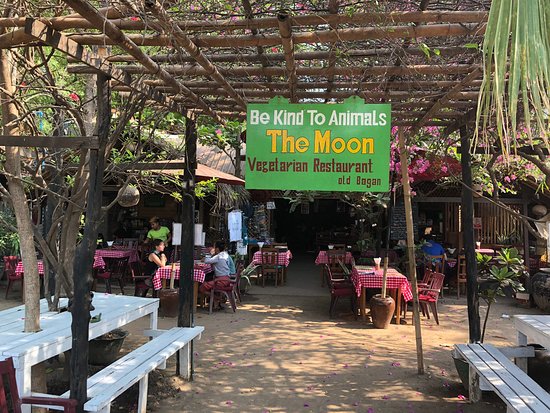
Don’t let the quirky name fool you – this vegetarian restaurant serves up some seriously delicious food. Their pumpkin curry is to die for, and the atmosphere is lovely. It’s a great place to meet other travelers too.
3. Sanon Training Restaurant

Not only does this place serve fantastic food, but it’s also a social enterprise that trains disadvantaged youth in hospitality skills. The menu is a mix of Western and Burmese dishes, and everything I’ve tried here has been delicious. Plus, you get to support a good cause while enjoying your meal!
History of Bagan, Myanmar: From Ancient Glory to Modern Significance

Bagan, an ancient city located on the eastern bank of the Ayeyarwady River in central Myanmar, stands as a testament to the rich cultural and religious heritage of Southeast Asia. This comprehensive history explores Bagan’s journey from its founding to its current status as a UNESCO World Heritage Site, covering its rise to power, golden age, decline, and modern significance.
Founding and Early Development (9th-11th Centuries)
The story of Bagan begins in the mid-to-late 9th century CE, when the Mranma (Burmans) migrated from the Nanzhao Kingdom in present-day China to the Irrawaddy Valley. This migration marked the beginning of what would become the Pagan Kingdom, laying the foundation for the unification of regions that constitute modern Myanmar. Archaeological evidence suggests that human settlement in the Bagan region dates back to the mid-7th century CE. However, it was not until the 9th century that the Burmans established a significant presence.

Initially, Bagan was one of several competing Pyu city-states in the region. By the late 10th century, the Burman settlement had grown in authority and grandeur, gradually absorbing surrounding areas. The early development of Bagan was characterized by the Burmans’ adoption of irrigation-based agriculture, learned from the Pyu people, and their integration of the Pyu’s predominantly Buddhist culture . This period saw the beginning of Bagan’s transformation into a city renowned for its architectural and religious significance.
A pivotal moment in Bagan’s early history came in 849 CE when King Pyinbya fortified the city. This act of fortification symbolized Bagan’s emergence as a central powerbase, setting the stage for its future expansion and influence. The city’s strategic location near the confluence of the Irrawaddy and Chindwin rivers played a crucial role in its growth and prosperity .
Rise to Power and the Pagan Dynasty
The rise of Bagan to regional prominence is closely tied to the establishment of the Pagan Dynasty. This dynasty, founded by the Bamar people, would go on to unify the regions that later constituted modern-day Myanmar. The Pagan Dynasty’s rule marked a period of significant political consolidation, cultural flourishing, and religious development.
Key Rulers and Their Contributions
1. King Anawrahta (Reigned 1044–1077)

The true ascendancy of Bagan began with the reign of King Anawrahta, who is credited with founding the Pagan Empire. Anawrahta’s reign was marked by military conquests, most notably the defeat of the Mon city of Thaton in 1057, which signaled the beginning of Burmese dominance in the region.
Anawrahta’s most significant contribution was the introduction of Theravada Buddhism to Upper Burma. This religious shift would have profound and lasting impacts on the culture and architecture of Bagan. Under Anawrahta’s rule, the construction of numerous temples began, establishing Bagan as a major power in Southeast Asia and setting the stage for its golden age.
2. King Kyansittha (Reigned 1084–1112)

Succeeding Anawrahta, King Kyansittha continued to consolidate and expand the Pagan domain. His reign is notable for the patronage of Mon culture and the further promotion of Theravada Buddhism. Kyansittha was responsible for building significant religious monuments, including the renowned Ananda Temple, which stands as a masterpiece of Mon architecture.
3. King Alaungsithu (Reigned 1112–1167)

The long reign of King Alaungsithu, grandson of Kyansittha, is remembered as a period of peace and prosperity. Alaungsithu was known for his extensive travels throughout his dominions and his commitment to building works of merit. The Thatbyinnyu Temple, the tallest of all Pagan monuments, was constructed during his reign .
4.King Narapatisithu (Reigned 1173–1210)
The reign of King Narapatisithu marked the height of Pagan’s power and cultural achievements. He continued the tradition of temple building and strengthened the kingdom’s economic base. Under Narapatisithu’s rule, the Burmese language and culture spread further, eclipsing Pyu and Mon influences.
The Golden Age of Bagan (11th-13th Centuries)
The period from the 11th to the 13th centuries is widely regarded as Bagan’s golden age. During this time, Bagan flourished as a major center of Buddhist culture, architecture, and scholarship. The city’s prosperity and religious fervor led to the construction of thousands of religious monuments, many of which still stand today.
Architectural Marvels
The most visible legacy of Bagan’s golden age is its breathtaking array of Buddhist architecture. Over 10,000 Buddhist temples, pagodas, and monasteries were constructed in the Bagan plains during the height of the Pagan Empire. These structures were not merely places of worship but also centers of learning and cultural exchange.
The architectural style of Bagan’s temples evolved from Indian Hindu temples, characterized by square or rectangular bases, arched entrances, and towering spires. This style was adapted to suit Buddhist purposes, with temples often housing images of the Buddha and serving as sites for merit-making activities.
Notable temples from this period include:

1. The Ananda Temple: Built in 1105 AD during the reign of King Kyanzittha, it is renowned for its Greek cross layout and monumental proportions .

2. The Thatbyinnyu Temple: Constructed in 1144 AD by King Alaungsithu, it stands as the tallest temple in Bagan .

3. The Dhammayangyi Temple: Known for its massive size and unique architectural features, this temple was built during the reign of King Narathu (1167-1170 AD) and is famous for its fine brickwork.

4. The Shwezigon Pagoda: Initiated by King Anawrahta and completed by King Kyanzittha, this pagoda became a prototype for Burmese stupas and remains a major pilgrimage site.
Religious and Cultural Flourishing
Bagan’s golden age was characterized by a syncretic religious environment where Theravada Buddhism coexisted with Mahayana Buddhism, Tantric Buddhism, Hinduism, and native animist traditions. The royal patronage of Theravada Buddhism, particularly under King Anawrahta, led to its primacy in the region.
The practice of merit-making, a key aspect of Theravada Buddhism, drove the construction of religious monuments. This cultural tradition was not only a religious expression but also a means of political control, with the king acting as the chief donor.
Scholarly and Artistic Contributions
During its golden age, Bagan became a cosmopolitan center for religious and secular studies, attracting monks and scholars from across Asia. The city specialized in Pali scholarship, focusing on grammar, philosophy, and Buddhist teachings. This intellectual environment contributed to the spread of Theravada Buddhism not only within Myanmar but also to other parts of Southeast Asia.
The art of Bagan, exemplified by its murals and sculptures, provides valuable insights into the cultural and religious practices of the time. These artworks depict scenes from Buddhist texts and local life, offering a window into the rich cultural tapestry of medieval Bagan.
Economic and Political Influence
Bagan’s prosperity during its golden age was supported by its strategic location along the Irrawaddy River, facilitating trade with India, China, and other regions. This economic strength enabled the kingdom to support its extensive building projects and maintain its political influence over a large area.
Decline and Fall of the Pagan Empire (13th-14th Centuries)
The decline of the Pagan Empire began in the mid-13th century, brought about by a combination of internal weaknesses and external pressures. By the 1280s, a significant portion of Upper Burma’s cultivable land had been donated to religious institutions, which were exempt from taxation. This severely undermined the financial base of the kingdom, as the crown struggled to maintain the loyalty of its courtiers and military servicemen due to dwindling resources.
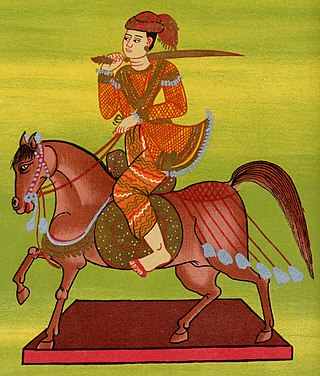
Externally, the Pagan Empire faced significant threats from neighboring regions, particularly the Mongol invasions led by Kublai Khan. In 1277, the Mongols defeated the Burmese forces at the Battle of Ngasaunggyan, near the Chinese border, marking the beginning of a series of Mongol incursions into the region. Although it is debated whether the Mongols ever occupied the city of Pagan itself, their repeated demands for tribute and military pressure weakened the kingdom.
The loss of the northern buffer state of Nanzhao, which had previously acted as a protective barrier against Chinese power, further exposed Pagan to external threats. The destruction of Nanzhao by the Mongols in the early 1250s left Pagan vulnerable to incursions from the north .The combination of internal economic weaknesses and external military pressures culminated in the fall of the Pagan Empire. By 1287, the kingdom had effectively collapsed, leading to a period of political fragmentation that lasted for several centuries. The once-unified Irrawaddy valley was divided among various smaller polities, and the central authority of Pagan was never fully restored.
Post-Fall Period and Preservation
After the fall of Bagan, the region did not immediately recover its former glory. The city was no longer the capital, and its political influence waned. The area became part of various smaller kingdoms and principalities that emerged in the aftermath of the Pagan Empire’s collapse. Despite this political fragmentation, Bagan remained a significant religious site due to its numerous temples and stupas, which continued to attract pilgrims.
Over the centuries, Bagan faced numerous challenges, including natural disasters such as earthquakes, which damaged many of its ancient structures. Despite these challenges, the site retained its religious and cultural significance. Local communities continued to maintain and use the temples for religious purposes, ensuring that Bagan remained a living heritage site.
Modern Era and UNESCO Recognition
In recent decades, Bagan has gained international recognition for its historical and cultural significance. Efforts have been made to preserve and restore its ancient structures, balancing the needs of tourism with conservation. However, some restoration efforts have been criticized for not respecting the original materials and styles, which initially hindered Bagan’s recognition as a UNESCO World Heritage site.
Despite these challenges, Bagan was finally designated a UNESCO World Heritage Site on July 6, 2019, during the 43rd session of the World Heritage Committee held in Baku, Azerbaijan.

This recognition came nearly 25 years after Bagan was first nominated for the status. The designation was a significant achievement for Myanmar, highlighting Bagan’s historical and cultural importance on a global scale.The UNESCO World Heritage Committee recognized Bagan based on several criteria:
Criterion (iii): Bagan is an exceptional testimony to the Buddhist cultural tradition of merit-making and the peak of Bagan civilization during the 11th-13th centuries .
Criterion (iv): The site contains an extraordinary ensemble of Buddhist monumental architecture, reflecting the strength of religious devotion of an early major Buddhist empire .
Criterion (vi): Bagan exemplifies living Buddhist beliefs and traditions of merit-making, expressed through the remarkable number of surviving stupas, temples, and monasteries .
Current Challenges and Future Prospects
Today, Bagan faces several challenges, including tourism pressures, environmental threats, and the need for effective conservation management. The Myanmar government has committed to removing hotels from the archaeological sites and relocating them to a dedicated hotel zone by 2028 to preserve the site’s integrity.
The management of Bagan is guided by an Integrated Management Framework, which includes risk reduction and disaster response strategies, especially following the 2016 earthquake that damaged numerous pagodas. The Bagan National Coordinating Committee (BAGANCOM) oversees the coordination of conservation efforts and development plans.
The UNESCO designation has the potential to boost tourism, which can provide economic benefits to the local community. However, it also necessitates careful management to ensure that tourism does not compromise the site’s cultural and historical integrity. The recognition has also raised global awareness of Bagan’s exceptional features and historical value, potentially attracting international support for preservation efforts .
Practical Tips for Your Bagan Adventure
Before you jet off to this temple paradise, here are a few practical tips to keep in mind:
1. Dress appropriately: Bagan’s temples are active religious sites, so dress modestly. Cover your shoulders and knees, and be prepared to go barefoot inside temples.
2. Stay hydrated: Bagan can get HOT, especially during the dry season. Carry plenty of water and wear sunscreen. Trust me, temple fatigue is real, and dehydration will only make it worse.
3. Get a SIM card: Having data on your phone can be a lifesaver for navigating between temples. You can easily pick up a SIM card at the airport or in Nyaung U.
4. Respect the sites: Remember, these are ancient structures and sacred places. Don’t climb on the temples (it’s prohibited anyway), and be mindful of your behavior.
5. Watch the sunrise and sunset: The changing light over the plains of Bagan is truly spectacular. Make the effort to catch at least one sunrise and sunset – you won’t regret it.
6. Book your hot air balloon ride in advance: These popular rides often sell out, especially during peak season. Book well in advance to avoid disappointment.
7. Bring cash: ATMs can be unreliable in Bagan, so it’s a good idea to bring enough cash for your stay. Most places don’t accept credit cards.
Wrapping Up: The Magic of Bagan
As I sit here, sifting through my memories and photos of Bagan, I’m struck once again by the sheer magic of this place. There’s something about Bagan that gets under your skin, that stays with you long after you’ve left. Maybe it’s the otherworldly landscape, the sense of history that permeates every brick and stone, or the warmth and resilience of the Burmese people. Whatever it is, I can promise you this: a trip to Bagan will change you. It will expand your horizons, challenge your perceptions, and leave you with memories that will last a lifetime.
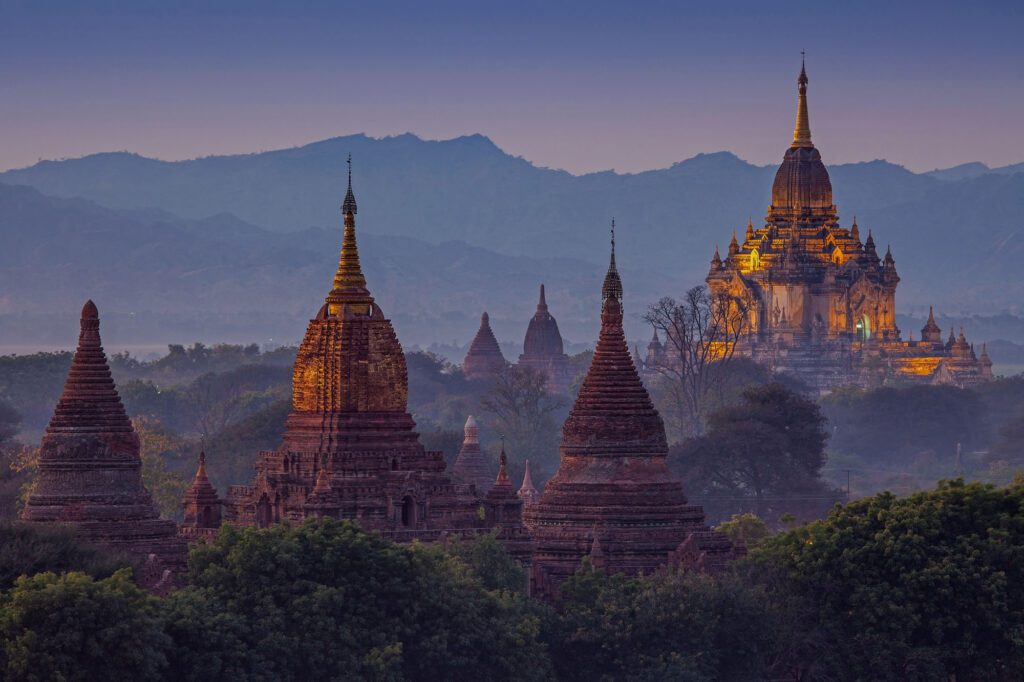
From the thrill of your first temple discovery to the peace of watching the sun set over the plains, Bagan is a place that speaks to the soul.So what are you waiting for? Pack your bags, book that ticket, and get ready for the adventure of a lifetime. Bagan is calling, and trust me, you want to answer that call. Who knows? Maybe I’ll see you there on my next visit. Until then, keep those travels funky and fresh!
Remember, as we like to say here at Funky Fresh Travels: Life is short, the world is wide, and there are temples to explore. So get out there and start exploring!Safe travels, fellow adventurers!
WHO AM I ?
Hello! I’m Eric, a French Australian citizen based between Australia, Asia and Bali and I love to travel and experience the world. I generally like outdoor activities, wellness, great food and venues , party and real local adventures ! I am a Yoga practitioner and fitness lover
I created this blog because I love to travel and I want to share my experiences with others. I’ve been traveling since I was a child, and I’ve been to over 50 countries. I’ve seen some amazing things and met some amazing people, and I want to help others experience the same things.
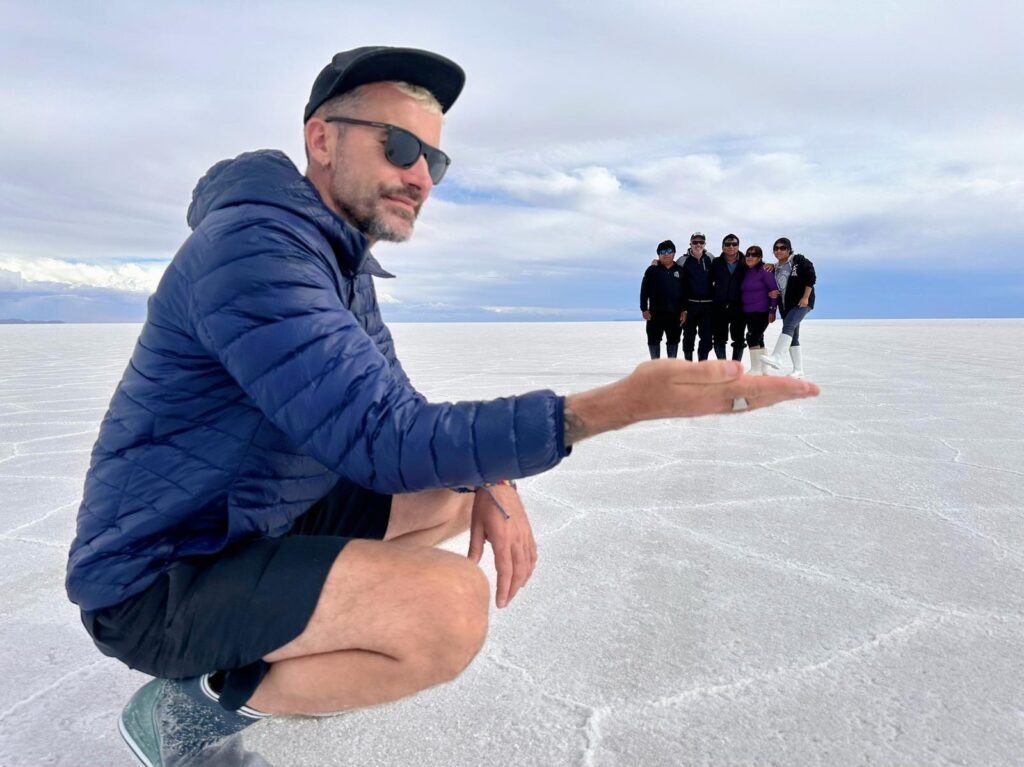
I believe that travel is one of the best ways to learn about the world and about yourself. When you travel, you’re forced to step outside of your comfort zone and experience new things. You learn about different cultures, different religions, and different ways of life. You also learn about yourself, your strengths, and your weaknesses.
Travel can also be a great way to make new friends. When you’re traveling, you’re surrounded by people from all over the world, and you’re all in the same boat. You’re all there to explore and experience new things, and that can create a bond between people.
Let’s connect together!
I hope that my travel blog will inspire others to travel and to see the world. I also hope that it will help people to learn about different cultures and to become more open-minded.


